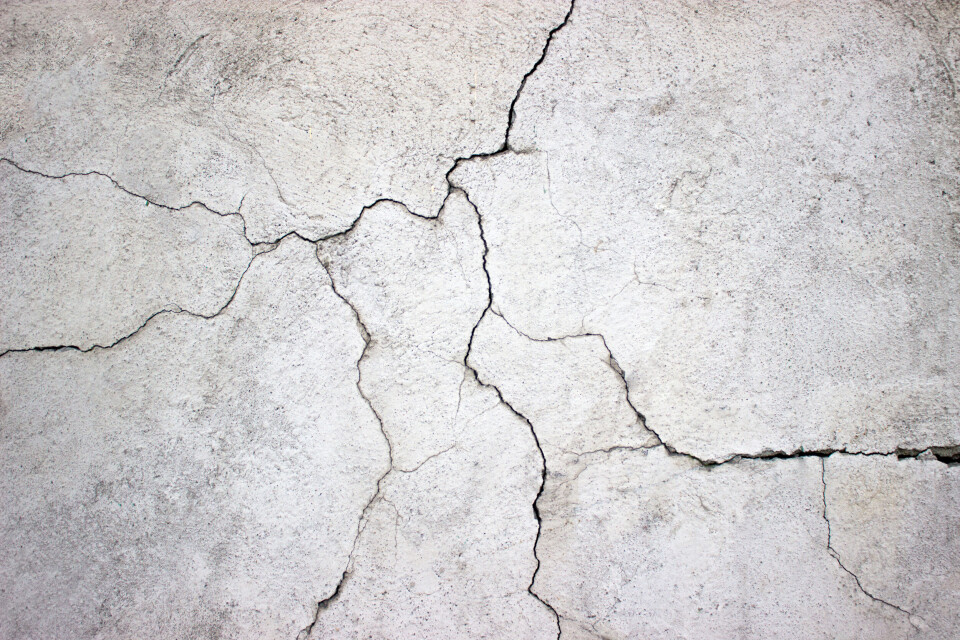-
How many Americans live in Paris - and where else are they choosing in France?
Over a quarter of all US nationals in France live in the capital city
-
Price rises for Netflix in France
The Standard (with ads) and Premium packages are increasing by €24 a year
-
Leclerc supermarkets to sell car fuel at cost price for Easter
The initiative will apply to diesel, petrol, and LPG
Natural disaster declared after droughts around Toulouse and Côte-d’Or
People whose property was damaged by the summer 2020 drought have 10 days from the announcement to begin an insurance claim

A state of natural disaster – catastrophe naturelle – has been declared in various locations around France including six communes around Toulouse (Haute-Garonne) and five in Côte-d’Or, following a drought in summer 2020.
The affected towns in Haute-Garonne are:
- Blagnac
- Cugnaux
- Fonbeauzard
- Merville
- Muret
- Vigoulet-Auzil
Residents of the city region surrounding Toulouse saw cracks appearing in the walls of their houses after experiencing the driest summer in 60 years, which saw drinking water supplies threatened.
A governmental decree was published in the official legal publication Le Journal officiel on Tuesday, September 28, recognising a state of catastrophe naturelle resulting from ground movements linked to drought dating between July 1 and September 30 2020.
Read more: Dordogne, Nord: ‘Natural disaster’ claims open for hundreds of areas
The decree also makes reference to the effect of drought in the following communes in Côte-d’Or:
- Montbard from April 1 to September 30, 2020 and
- Combertault
- Couchey
- Meursault
- Saulon-la-Rue from July 1 to September 30, 2020.
People whose property was affected by this weather event have 10 calendar days from the date of the decree to inform their insurer.
Natural disaster coverage is a compulsory component of standard multi-risk house insurance and so companies will be compelled to cover any damage directly linked to the event as long as a claim is made within the deadline.
Indirect costs – such as the cost of rehousing and loss of earnings – are not covered unless mentioned in the insurance contract.
On August 31, several other communes in Haute-Garonne – including Toulouse – had also been included in a natural disaster announcement linked to the same period in 2020.
To find out more about initiating an insurance claim after a natural disaster, you can read our article here. For further information about the situation in Haute-Garonne, you can visit the website of the local prefecture.
Where else in France was a natural disaster declared?
Many communes located around France have been affected by ground movements linked to drought occurring in:
- Ain: Ambérieu-en-Bugey between April 1 and September 30, 2020 and Guéreins and Hautecourt-Romanèche between July 1 and September 30, 2020.
- Allier: Dompierre-sur-Besbre from April 1 to June 30, 2020, Saint-Pont and Vichy from July 1 to September 30, 2020.
- Ardennes: Boulzicourt from July 1 to September 30, 2020.
- Corrèze: Ligneyrac and Troche from July 1 to September 30, 2020.
- Drôme: Aouste-sur-Sye from July 1 until September 30, 2020.
- Isère: Claix from April 1 until June 30, 2020, Pommier-de-Beaurepaire from April 1 until September 30, 2020 and Trept from July 1 until September 30, 2020.
- Jura: Conliège from July 1 until September 30, 2020.
- Loire: Saint-Chamond from April 1 until September 30, 2020.
- Lot: Catus, Crayssac, Nuzéjouls and Thédirac from July 1 until September 30, 2020.
- Marne: Pargny-lès-Reims from April 1 until September 30, 2020 and Arrigny, Courcelles-Sapicourt, Giffaumont-Champaubert, Jussecourt-Minecourt from July 1 until September 30, 2020.
- Haute-Marne: Eurville-Bienville, Silvarouvres and Voillecomte from July 1 until September 30, 2020.
- Meuse: Autrécourt-sur-Aire, Montblainville and Vaucouleurs from April 1 until September 30, 2020.
- Moselle: Augny, Bisten-en-Lorraine, Lixing-lès-Rouhling and Uckange from July 1 until September 30, 2020.
- Oise: Choisy-au-Bac and Le Meux from July 1 from September 30, 2020.
- Orne: Bellavilliers and Sablons sur Huisne from July 1 to September 30, 2020.
- Puy-de-Dôme: Thiers from April 1 until June 30, 2020 and Saint-Beauzire from July 1 to September 30, 2020.
- Bas-Rhin: Geiswiller-Zœbersdorf and Schnersheim from July 1 until September 30, 2020.
- Rhône: Châtillon and Dardilly from July 1 until September 30, 2020.
- Haute-Saône: Port-sur-Saône and Pusy-et-Épenoux from January 1 until March 31 2019 and Baulay, Boulot and La Côte from July 1 2020 until September 30, 2020.
- Saône-et-Loire: Chânes from July 1 from September 30, 2020.
- Sarthe: Bonnétable, Saint-Aubin-des-Coudrais, Saint-Michel-de-Chavaignes, Thorigné-sur-Dué and Théligny from July 1 from September 30, 2020.
- Seine-et-Marne: Brie-Comte-Robert, Couilly-Pont-aux-Dames, Dammarie-les-Lys, Lognes, Marolles-en-Brie, Saint-Germain-sous-Doue, Saint-Thibault-des-Vignes, Solers and Torcy from July 1 from September 30, 2020.
- Yvelines: Châteaufort and Saint-Cyr-l'Ecole from July 1 until September 30, 2020.
- Haute-Vienne: Limoges and Lussac-les-Eglises from July 1 until September 30, 2020.
- Yonne: Fouchères from July 1 until September 30, 2020.
- Essonne: Breux-Jouy from July 1 until September 30, 2020.
- Val-de-Marne: Perreux-sur-Marne and Sucy-en-Brie from July 1 until September 30, 2020.
- Val-d’Oise: Montigny-lès-Cormeilles from July 1 until September 30, 2020.
























